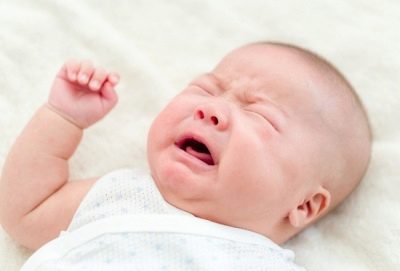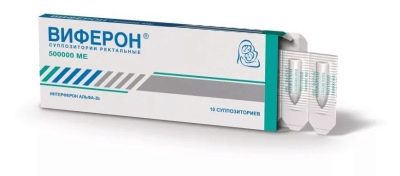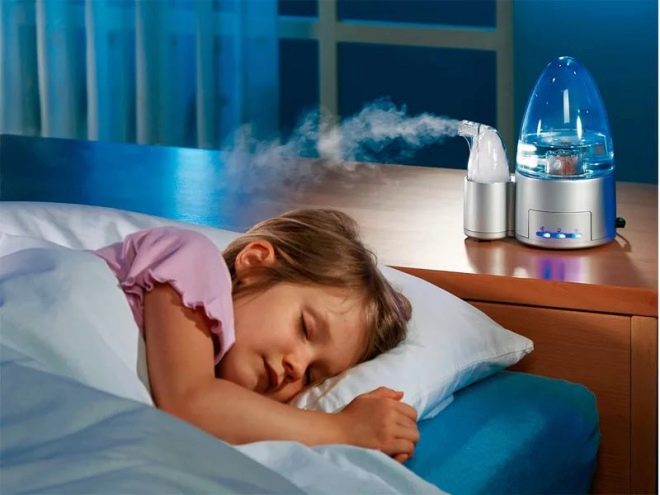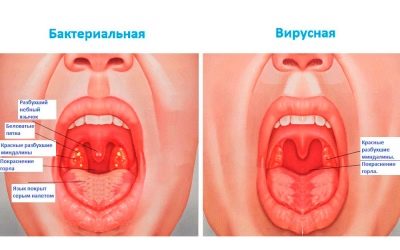How to understand that a baby has a sore throat, and how to treat it?
A child who, by virtue of age, may complain of a sore throat, greatly simplifies the task for parents and doctors. A nursing baby does not know how to express his emotions in words, including pain, and it’s not so easy to guess what the baby is worried about. In this article we will tell you how to determine what your baby has a sore throat, and how to help him.
Symptoms and signs
Despite the fact that an infant cannot directly indicate the source of discomfort, he will do his best to make it clear that he is unwell. In response to a sore throat, the baby's behavior will change. He will sleep worse, the usual routine of the day if he was installed by mom is broken. Sleep usually becomes episodic. Even if the baby falls asleep, after 30-40 minutes he wakes up again and starts to act up.
If inflammation in the throat prevents normal swallowing, then the child may refuse to eat at all. At the same time, he will experience hunger.
The proposed breast or bottle with the mixture will be taken willingly and with greed, but after a few seconds, toss it and begin to scream and cry. To feed a baby with a sore throat is an incredibly difficult task.
Naughty, crying and resenting the child will be outside the meal, because from time to time he needs to swallow saliva. If this process is quite painful, then it will surely be accompanied by crying.
Such a symptom as increased drooling is difficult to consider diagnostically important. In many children, long before 4 months, when the appearance of the first tooth is expected, saliva begins to flow, and this is a variant of the physiological norm. Even if the salivation began at 3 months, and the first tooth appeared at 7-8 months.
It should be noted that with inflammation in the throat of a baby, the amount of saliva secreted does indeed slightly increase.
The fact is that saliva is the main antiseptic provided by nature for inflammation in the oropharynx. Therefore, the body responds to the penetration of pathogenic microorganisms by enhanced saliva production.
Sometimes a sore throat is preceded by a runny nose. In an infant, nasal congestion is not always painful, due to the narrowness of the nasal passages. But for the time being a violation of nasal breathing, the baby breathes through his mouth, the mucous membranes of the larynx and tonsils dry up, inflammation begins.
It should be noted that in addition to weak immunity, infants have another factor that contributes to the emergence of ENT diseases. They have very loose mucous membranes. Getting on them, viruses and bacteria multiply faster, the disease progresses rapidly.
Diagnostics
If the changes described above have taken place in the behavior of the baby, the mother needs to carry out a preliminary examination of the baby to confirm or eliminate the sore throat as a cause of concern. The only informative way is throat inspection. It should be carried out carefully, with clean hands, using a medical spatula or a teaspoon. You do not need to press hard on the root of the tongue - the child will reflexly vomit. It is best to slightly press the center or tip of the tongue and slightly throw back the crumbs of the head. For a better overview you should use a flashlight.
On examination, evaluate:
general view of the mouth and throat;
color of mucous membranes;
the presence or absence of swelling and redness;
the size and color of the tonsils;
color of the back of the larynx.
A healthy baby's mouth and throat have a pale pink color.A small language is possible white bloom - for infants who are mainly on the milk diet, this is normal. Puffiness is normal no. Exceptions are gums if teething is expected soon. Tonsils are not enlarged, their color is smooth, pink. On the back of the throat is not noticeable blood vessels, redness.
If the cause of anxiety karapuza in the throat, then the mother will be able to see enlarged tonsils, a large amount of plaque that covers not only the tongue, but also the inside of the cheeks, the palate, the back wall of the larynx.
Redness can be observed in the tonsils, both palatal and pharyngeal, on the back of the pharynx. The appearance of sores, vesicles, pustules, caseous traffic jams (popularly known as casios) may be added to the color change.
Be sure to probe the submandibular and occipital lymph nodes, they can be enlarged. The temperature can be from subfebrile (37.0-35.7) to high (with angina to 40.0 degrees), in some cases the temperature can be normal in general.
If the mother did not find such disturbing visual signs, she should visit the pediatrician with the child to start looking for another reason for restless behavior, anorexia and sleep. If the throat is really sore, the doctor should be called to the house to prevent the spread of the infection if the baby has an infectious disease.
It is impossible to delay the treatment - delayed treatment for ENT diseases can lead to chronic forms of diseases, complications, and impaired pulmonary breathing, which can cause suffocation. If the child wheezes, you should immediately call the ambulance.
Possible reasons
In a newborn child, up to half a year of independent life, innate maternal immunity acts. After 6 months, his own immune system begins to gradually "learn." And this happens when confronted with viruses and bacteria. Nature did not invent a different, safer and painless way.
Thus, the risk of infection with viral or bacterial infections increases after six months., but in the first half of the first year of life everything can happen too.
Respiratory viruses are the most common cause of sore throat in babies.. It is quite problematic to “pick them up” for a walk, especially in cold weather, but it is very simple - in crowded places - polyclinics, shops, and public transport. Viruses that penetrate through the nose, can pass further, "settling" on the mucous tissues of the larynx, on the lymphoid tissue of the tonsils.
Children under one year learn about the world not only with eyes, ears and tactile, but also to taste. Partly because of this, and partly because of itching when teething, babies absolutely everything that falls into their hands, is dragged into their mouths. Together with a toy or other object, the germ may well enter into the oral cavity the bacteria that live almost everywhere. Streptococci and staphylococci, which cause severe forms of tonsillitis, are especially dangerous. Bacterial and fungal infections of the oropharynx may also result from contact with an adult - a carrier of bacteria or with food, such as water.
In the period of teething in a child, the throat can also ache. This is due to the work of local immunity. Since a painful gum is present in the oral cavity during this period, when the infection is attached, the situation worsens considerably.
Allergy is another fairly common cause of diseases of the oropharynx in infants. Most often, an inadequate reaction of the body develops to chemicals that are contained in detergents and laundry detergents, which the mother makes cleaning and washes diapers and toddler bedding. Dry air, heat in the apartment is another factor in the appearance of inflammatory processes in the respiratory organs.
Treatment
To treat a child up to a year in all cases, the doctor must. Self-treatment is unacceptable, as the risks to the life of the crumbs are too great.
That is why it is important immediately after the discovery of problems with the throat to see a doctor. He will be able to determine what kind of disease happened to the baby. The laboratory capabilities will help a specialist with this. A throat swab is subjected to a thorough examination in order to detect a specific pathogen.
As soon as a virus, bacterium, fungus or allergen becomes known, the child will be given the appropriate treatment. Quite often, babies with serious infectious diseases that manifest themselves, including sore throat, are recommended to undergo therapy in the hospital under 24-hour medical supervision. If the reason is not so serious, and the pediatrician is sure that the mother will fulfill all the prescriptions, then the child can be left to be treated at home.
Viral throat lesions
For such ailments, special treatment is not necessary, although the majority of pediatricians try to "just in case" antiviral drugs - "Viferon" in candles and other drugs in syrup or drops. These drugs do not have efficacy proven in clinical conditions, and therefore, together with homeopathic antiviral agents, are agents that do not harm at best. Benefits do not wait. After a few days, the immunity will cope with the virus on its own, and taking the drugs does not affect the speed of recovery.
If a child has a severe infection, he will be hospitalized, where antiviral drugs will be administered intravenously with proven effectiveness.
There are few of them, and all of them are serious medicines that are not advertised on TV as "a quick and reliable remedy for flu and ARVI." If you are not sent to the hospital, there is virtually no need for antiviral.
And there is a need for proper care for the baby. He must breathe humid air, often drink warm water. If he refuses to suck her from a bottle, you need to pour it into her mouth with a spoon. Saline solution should be instilled into the spout to prevent the mucous membranes from drying out (1 tsp. Of salt per liter of water).
If there is severe inflammation, the doctor may recommend treating the child's throat with a balm. «Viniline»pre-irrigated with antiseptic «Miramistin". "Vinyl" can only be used if the child is not allergic to medications. For the youngest, pediatricians recommend mixing the drug with sea buckthorn oil in a 1: 5 ratio.
Bacterial and fungal diseases
With bacterial inflammation of the throat and oral cavity of the infant with the mother, they are most likely hospitalized, because the treatment of most of these sore throats, candidiasis and even pharyngitis caused by bacteria, requires the mandatory use of antibiotics.
Babies up to one year old usually start treatment with the penicillin group. In addition, they can recommend throat treatment. ”Vinyl"Or oil solution" Chlorophyllipt ", which shows high efficiency in relation to staphylococcus, which, as is known, can be destroyed by far from every antibiotic.
Fungal diseases can be successfully treated at home, they will include treatment with antifungal agents such as "Hinosol" and taking antifungal drugs inside. You can find out which drugs will be prescribed after determining the type of fungus.
Useful tips
During the period of massive growth of respiratory viral infections should not attend with a child up to one year old where there are many people at the same time. Walking is useful, but only where there is a lot of fresh air, and there are almost no potential virus carriers in the park, the public garden.
Wash baby's underwear and clothes with baby hypo-allergenic powders. After washing additionally rinse things. This will reduce the risk of allergic inflammation of the oropharynx.
To protect the throat of an infant, you need to maintain sufficient humidity. It should not exceed 70%, and should not be lower than 50%. Heaters in the children's room strongly dry the air. They do not need to put in the room.
It should be time to do preventive vaccinations. Usually by 10 months the baby is already vaccinated against most severe infections.
How to treat a sore throat, see the following video.































